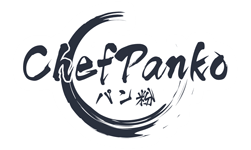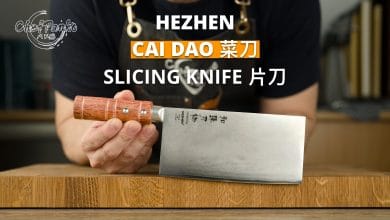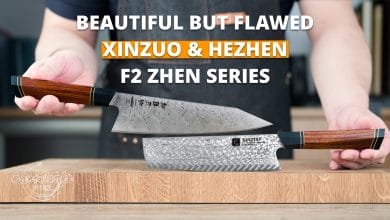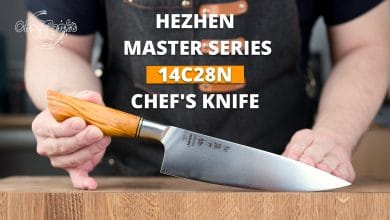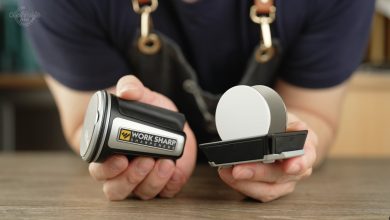The Santoku from Masutani comes in a cardboard box, and it comes with a plastic blade cover. The knife is protected with a nice handle cut-out that prevents the knife from wiggling around. (Click here for the Masutani Nakiri VG10 Review)

Masutani Aesthetics
The knife comes with multiple layers of softer stainless steel and has a visible cladding line. The blade has a matt finish and comes with a half-tang western handle.
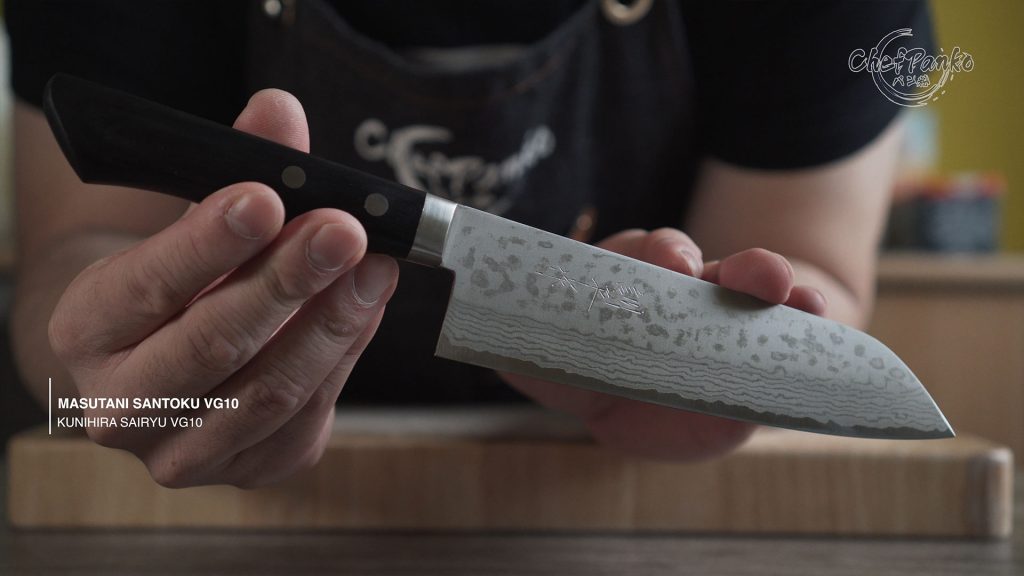
Masutani VG10 Core Material
The Masutani Santoku comes with a VG10 core with a Rockwell of 60. Keep in mind that the VG10 is quite brittle and should not be used to slice through frozen food, bones, cheese, or hard bread, or force your way through other food like nuts.

Edge durability & sharpened angle
The knife is sharpened at a 12-degree angle per side. This angle is great for sharpness and delicate slicing. Therefore you should be gentle with the knife-edge since it prioritizes sharpness over edge durability.
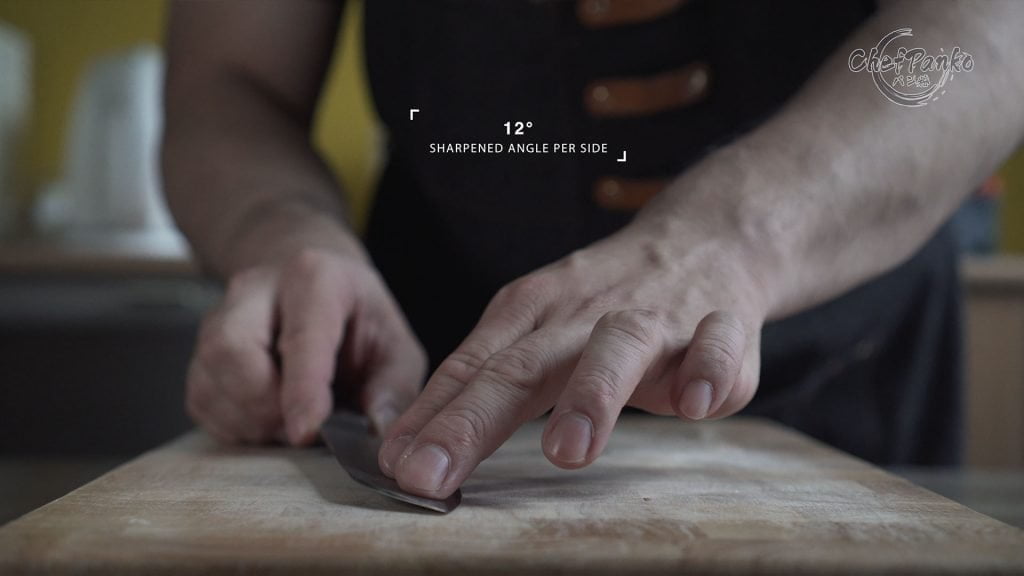
Edge Retention
With a Rockwell of 60, the knife can hold the edge for around 5 to 6 months with regular honing sessions before needing whetstone maintenance.
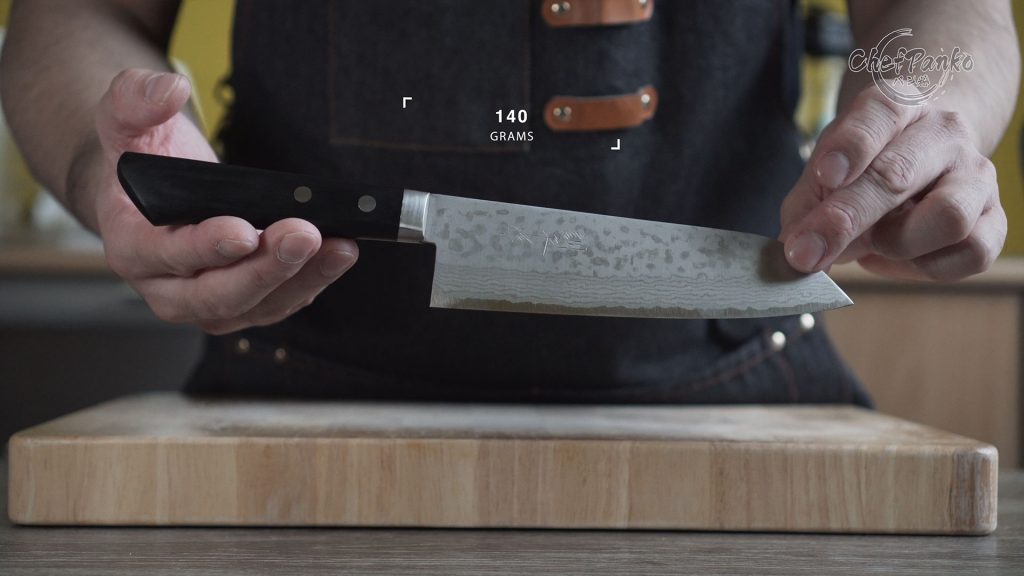
Weight and Spine tapering
The knife’s weight is 140grams, and the knife also has a distal spine tapering with 1.7mm at the heel, 1.6mm at the middle, and 1.5mm at the front.

Knife handle
The knife handle is made from black pakkawood, so it is more resistant to water. The western design handle is also great since Masutani added contours. However, the handle is on the shorter and narrower side and might be less comfortable if you have a large hand size.

Knife balance point
When it comes to the western handle design on a Japanese knife, you will see a balance point shift. To keep the traditional balance point of a Santoku, Masutani decided to give the knife a half-tang western handle. So you keep all the benefits of a western handle without sacrificing the traditional balance point.
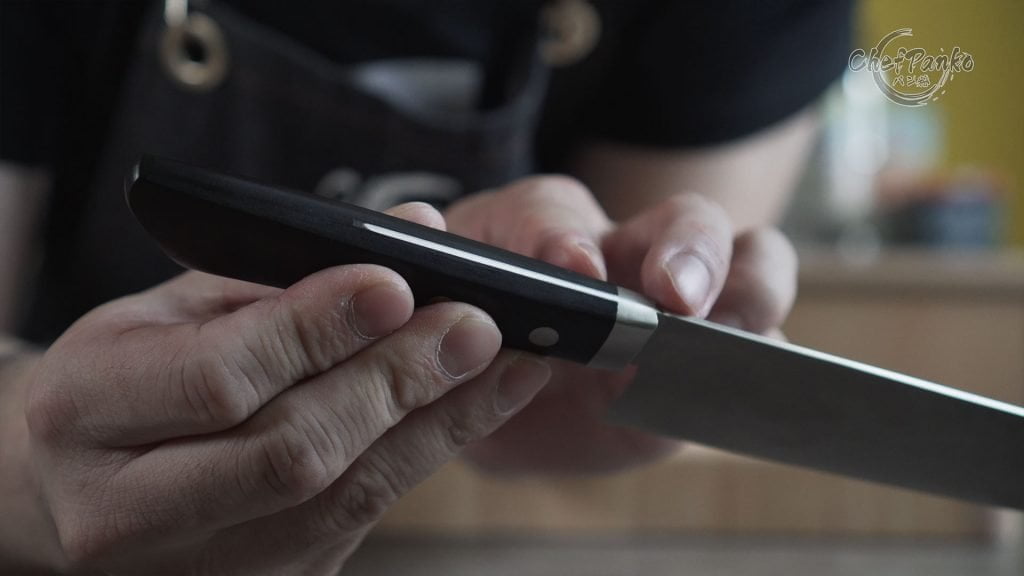
Pinch grip balance point
With a pinch grip, the balance point will be in the middle, so you have complete control.

Fingertip grip
The knife will be front-heavy with a fingertip grip, making it great for Japanese cuisine and slicing work with the knife’s front.
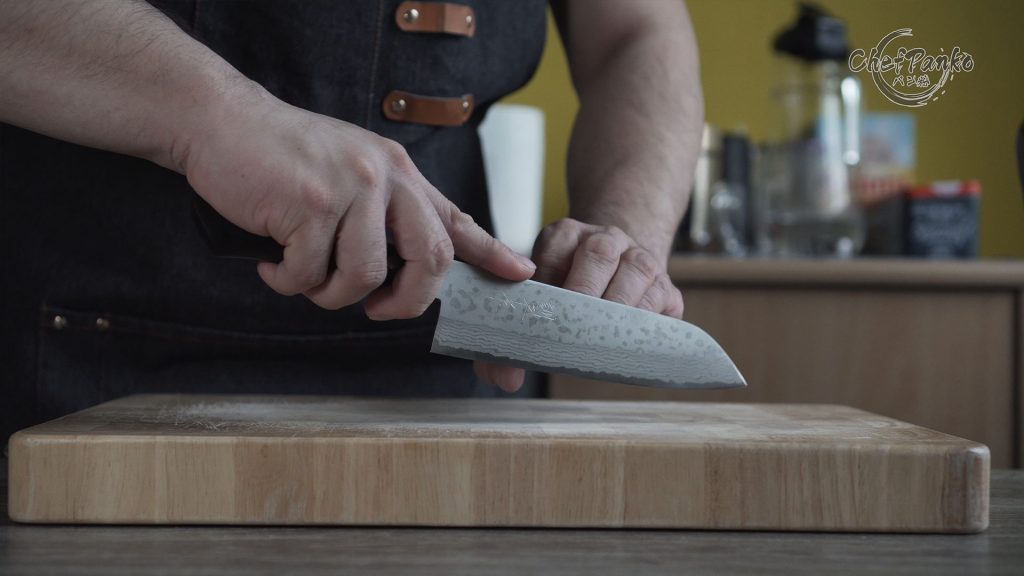
Blade profile
Despite having a western handle, Masutani keeps the flat traditional Santoku profile, making it great for an up-and-forward motion. While it can still rock, it is less suitable for rocking.

Final Conclusion and my Recommendation
Masutani, also known as Kunihira, managed to keep the traditional balance point, profile, and lightweight knife while having a western-style handle. Combined with the thin blade and low sharpened angle of 12 degrees, you can see that the knife is catered for delicate work and prioritizes sharpness over durability. Keep in mind that the handle is short and narrow and might be less comfortable if you have a large hand size.

🛒S H O P:
Western webshop search:
”Masutani Santoku VG10”
Japanese webshops search:
”Kunihira Sairyu Santoku VG10”
or
”Kunihira Santoku VG10”
I recommend buying the Kunihira Masutani Santoku locally. You get a better return policy and warranty.
If you want to import it from Japan, keep in mind that customs/import tax is on your behalf.
N O T E S:
Most western webshops will name the Santoku ”Masutani”, Suggesting that the blacksmith is Masutani and that he makes the knife. In reality, the company is called Kunihira Sairyu, which is also what the kanji says” Kunihira”. Therefore the Japanese-based webshops will name it Kunihira Sairyu and won’t mention Masutani.
▶ If you want to know what knife you should buy you can read the following article ''Choosing your knife''. ▶ On my youtube channel, I have reviewed a lot of different knives. You can watch the playlist by clicking here. ▶ Click here, if you want to search for other kitchen knives on: Amazon. ▶ , if you want to search for other Chinese knives on . ▶ Check out my gear on Kit: https://kit.co/ChefPanko ▶ Check out my recommendation on Amazon: https://www.amazon.com/shop/chefpanko Full Disclosure: If you purchase from these links I get a small commission that goes towards supporting the channel and website. As an Amazon Associate, I earn from qualifying purchases ▶ If you have any questions about Japanese knives made in China or about some of the brands feel free to ask it in the comment section below. Thank you for your support and feedback. ▶ Want to work with me? Please use the contact form by clicking here.
